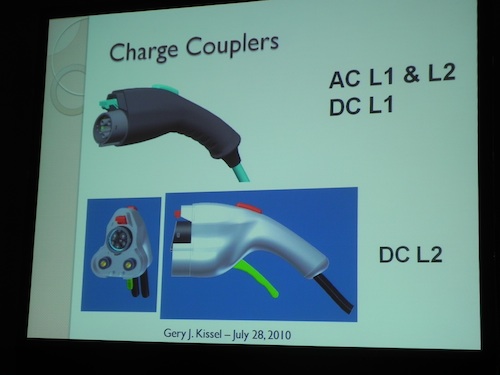...
The other standard is an enhancement under study to the existing AC charging standard, SAE J1772-2009. Now that the this existing AC standard is widely accepted for all vehicles targeted for the United States, the SAE has shifted focus toward modifying it to also accommodate DC charging . This DC enhancement is still emerging, and therefore has not been implemented on any vehicles or charges yet.
At Plug-In 2010, SAE publicly proposed the “Combo Charging Connector” concept. It defines the outline geometry for the AC core and also for the DC extension. The AC core in North America and Japan would be based on the existing J1772-2009 layout for AC. The AC core in Europe would use the layout based on a connector design from Mennekes. The inclusion of the DC extension is optional, and if included, will be universal across all regions...





